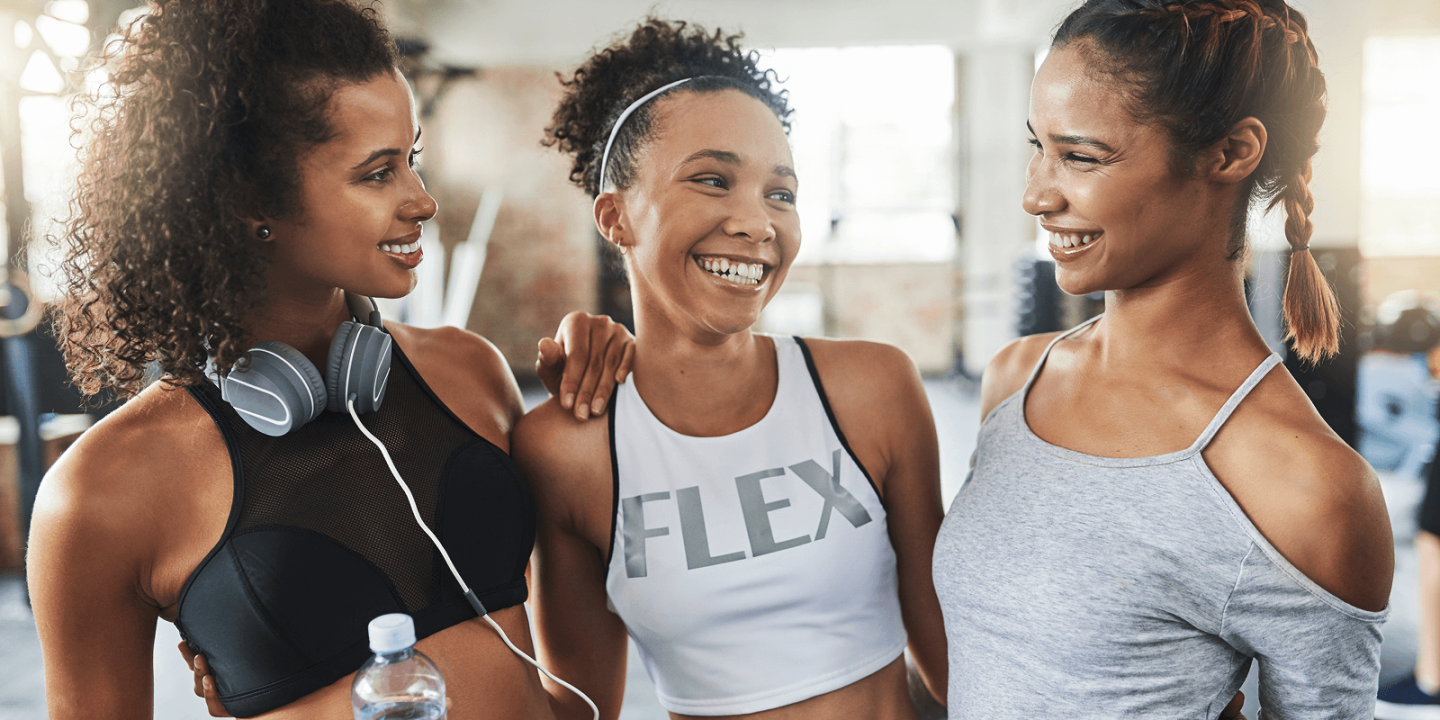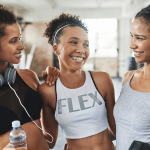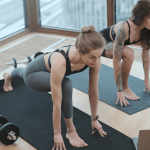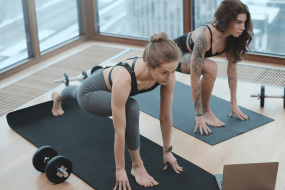
For decades, fitness programs have followed a one-size-fits-all model, often ignoring the unique hormonal cycles and needs of women. But in 2025, that’s changing. A growing movement around hormone-friendly workouts is reshaping how women train, recover, and achieve results by working with their bodies, not against them.
This shift is more than just a trend. It’s a science-backed evolution that considers the natural rhythm of the female body, aligning exercise with hormonal fluctuations to promote better energy, mood, strength, and long-term health.
Welcome to the future of female fitness, where science, cycle awareness, and smart training come together.
Understanding the Hormone–Fitness Connection
Unlike men, who experience relatively stable hormone levels daily, women go through four distinct phases in their menstrual cycle, each influenced by different hormonal changes. These fluctuations don’t just affect mood and cravings; they significantly impact:
- Energy levels
- Muscle recovery
- Workout performance
- Mental clarity and motivation
- Sleep quality and endurance
Traditional workout plans, especially high-intensity, repetitive schedules, tend to ignore these variables. As a result, many women:
- Burn out quickly
- Hit frustrating plateaus
- Suffer irregular cycles
- Feel exhausted or uninspired
- Push themselves at the wrong time and under-recover
When women train without considering their hormonal phases, they may be fighting against their biology instead of harnessing it for peak results.
That’s where hormone-friendly fitness comes in. It’s not about slowing down, it’s about strategic timing. Aligning workouts with each phase of the menstrual cycle allows women to tap into their natural strengths, reduce injury risk, improve mood, and build long-term consistency.
How Hormone-Friendly Training Works
Hormone-friendly training is built around the four key phases of the menstrual cycle:
- Menstrual
- Follicular
- Ovulation
- Luteal
Instead of sticking to a fixed workout schedule, women can adapt their training intensity and focus based on where they are in their cycle. Here’s how it works:
Menstrual Phase (Days 1–5)
Focus: Gentle movement and recovery
Best workouts: Stretching, yoga, light walking, breathwork
Hormones: Estrogen and progesterone are at their lowest
Body status: Energy is down; inflammation may be higher
This is a time to slow down and nurture the body. While many women feel pressure to “push through,” listening to your body during menstruation can prevent fatigue and overtraining. The gentle movement supports circulation, relieves cramps, and promotes emotional well-being without taxing your system.
💡 Tip: Use this time to focus on sleep quality, hydration, and mental clarity. Journaling and mindfulness exercises can support emotional balance.
Follicular Phase (Days 6–13)
Focus: Strength building and high-intensity work
Best workouts: Weight training, HIIT, boxing, spin, circuit training
Hormones: Estrogen begins to rise
Body status: Energy increases, motivation climbs, recovery is faster
This is your go-to time. Estrogen has a performance-enhancing effect; it improves insulin sensitivity, muscle-building potential, and stamina. During this phase, women typically feel stronger, sharper, and more confident. It’s a great window for trying new workouts or increasing intensity.
💡 Tip: Incorporate progressive overload (heavier weights or faster pace) to maximize strength gains during this phase.
Ovulation (Around Day 14)
Focus: Peak power and performance
Best workouts: Sprint training, PR attempts, team sports, plyometrics
Hormones: Estrogen peaks; luteinizing hormone (LH) surges
Body status: Energy, coordination, and mental focus are at their highest
Ovulation brings about peak physiological performance. Estrogen supports neuromuscular efficiency, which means you’re more coordinated and explosive. It’s a great time to push for personal bests, try intense power movements, or engage in social group workouts.
However, some women may experience joint laxity during this phase (due to hormone shifts), so form and mobility warm-ups are crucial to avoid injury.
💡 Tip: Fuel your body with complex carbs and protein around this time to support muscle recovery and performance.
Luteal Phase (Days 15–28)
Focus: Sustainable movement and stress reduction
Best workouts: Pilates, yoga, steady-state cardio, core work
Hormones: Progesterone rises; estrogen dips toward the end
Body status: Recovery slows; mood may fluctuate; cravings may increase
The luteal phase is often misunderstood. Progesterone increases body temperature and can affect hydration, sleep, and mood. While high-intensity training may feel harder, this is an ideal time for moderate, mindful movement. It’s also the phase when PMS symptoms may arise, so compassion and flexibility are essential.
Workouts that combine breathwork, mobility, and stability help reduce inflammation and calm the nervous system.
💡 Tip: Include magnesium-rich foods (like spinach, dark chocolate, or nuts) to ease PMS and support sleep.
Benefits of Hormone-Friendly Fitness
When women train with their hormones instead of against them, the results go far beyond physical transformation. This approach fosters deeper mind-body awareness and long-term wellness.
Key Benefits Include:
- ✅ Improved energy levels: No more feeling “drained” after every session
- ✅ Better muscle recovery: Syncing training reduces overtraining stress
- ✅ Fewer PMS symptoms: Movement, sleep, and nutrition can ease pain and mood swings
- ✅ Sustainable fat loss: Supporting metabolism at each stage improves consistency
- ✅ Stronger hormonal balance: Helps regulate cycles, and supports thyroid and adrenal health
- ✅ Improved fertility support: Particularly for those trying to conceive or heal hormonal imbalances
- ✅ Boosted confidence: Understanding your body = empowerment in and out of the gym
This model also promotes cycle literacy, helping women learn the cues of their bodies and make informed, self-compassionate choices.
The Rise of Cycle-Synced Fitness Apps and Programs
In 2025, fitness and tech are finally catching up with women’s biology. We’re seeing a wave of digital tools that integrate menstrual cycle tracking with workout and nutrition plans. These platforms go beyond just period logging; they’re intelligent, personalized, and built by women for women.
What These Tools Offer:
- Real-time phase tracking
- Nutrition guidance synced to hormone shifts
- Workout adjustments based on daily cycle feedback
- Insights on mood, stress, and performance trends
- Integration with wearable tech and health metrics
These platforms often collaborate with women’s health experts, trainers, and medical professionals to offer credible, cycle-based programming that helps women feel empowered—not punished—by their biology.
💡 Tip: Look for apps that let you sync with Apple Health, Fitbit, or Garmin for a complete picture of your training cycle.

The Future Is Female and Personalized
Hormone-friendly workouts are more than a fitness trend. They’re a cultural correction to decades of generalized training advice based on male physiology.
This shift permits women to:
- Listen to their bodies
- Redefine progress
- Rest without guilt
- Train with their biology, not against it
In the coming years, expect to see cycle-based education become standard in schools, gyms, and even corporate wellness programs. Coaches will be trained to understand the menstrual cycle. Nutritionists will recommend meals based on luteal vs. follicular needs. Wearables will provide predictive insights on when to rest or push.
The movement is here, and it’s long overdue.
At HealthX, We’re Leading the Change
At HealthX, we’re committed to helping women unlock their full potential through personalized, hormone-aware fitness. Whether you’re navigating hormonal imbalances, trying to improve fertility, or simply want to feel more in tune with your body, we provide resources, tools, and expert-backed programs to support you every step of the way.
We believe that female fitness is strongest when it’s built on science, not struggle.
Your body speaks every day. The future of fitness is learning how to listen.













